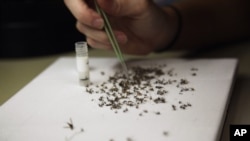and lawmakers won't do a damn thing until it happens to their family - sad
A spokesperson for the US Centers for Disease Control and Prevention (CDC) released a statement that said all 47 Miami-Dade students suspected to be infected with the Zika virus have been quarantined inside their homes until further testing is performed.
READ MORE AT: Miami High School Shut Down after Zika Outbreak Infects 47 Students
A spokesperson for the US Centers for Disease Control and Prevention (CDC) released a statement that said all 47 Miami-Dade students suspected to be infected with the Zika virus have been quarantined inside their homes until further testing is performed.
READ MORE AT: Miami High School Shut Down after Zika Outbreak Infects 47 Students






